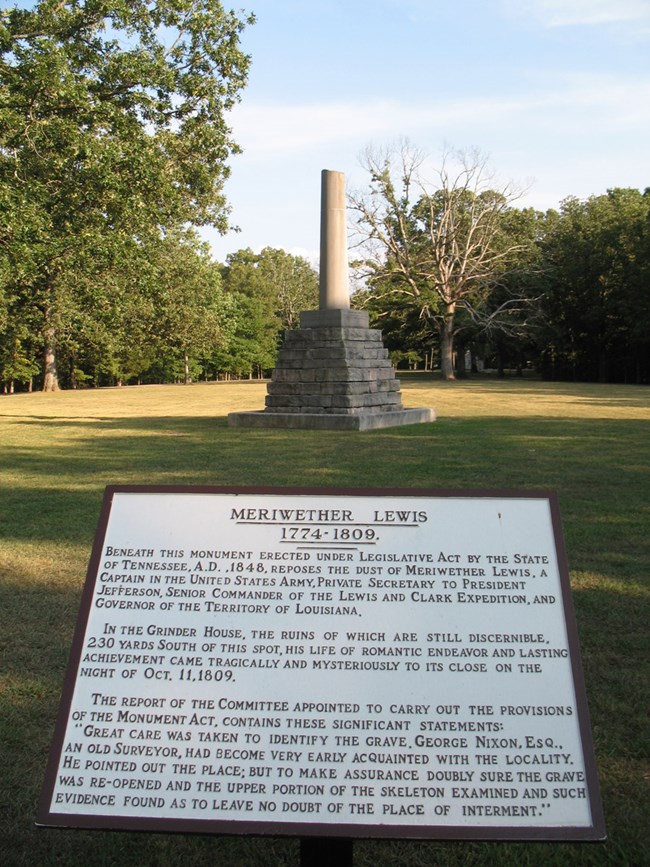Last updated: September 20, 2019
Article
Lewis’s Death

Photo: Creative Commons, 2.0, Jamie
When Meriwether Lewis was hastily buried near present-day Hohenwald, Tennessee in 1809, his grave was marked by rough fence rails. Although Lewis was Governor of the Upper Louisiana Territory at the time of his death, he was not afforded the honor of a funeral. Only one contemporary friend was recorded to have visited his grave to mourn him. Other than appointing his successor, the federal government did not acknowledge Lewis’s death.
Although the state of Tennessee erected a monument over his grave in 1848, for most of the 19th century, Lewis’ grave was described as abandoned and overgrown. A group of Tennesseans encouraged President Calvin Coolidge to designate the grave the fifth national monument in the south in 1925 and it was placed under the control of the National Park Service. In 1961, President Kennedy made it part of the Natchez Trace Parkway, which generally follows the old Trace from Natchez to Nashville. Today, the grave site draws visitors from around the world.
